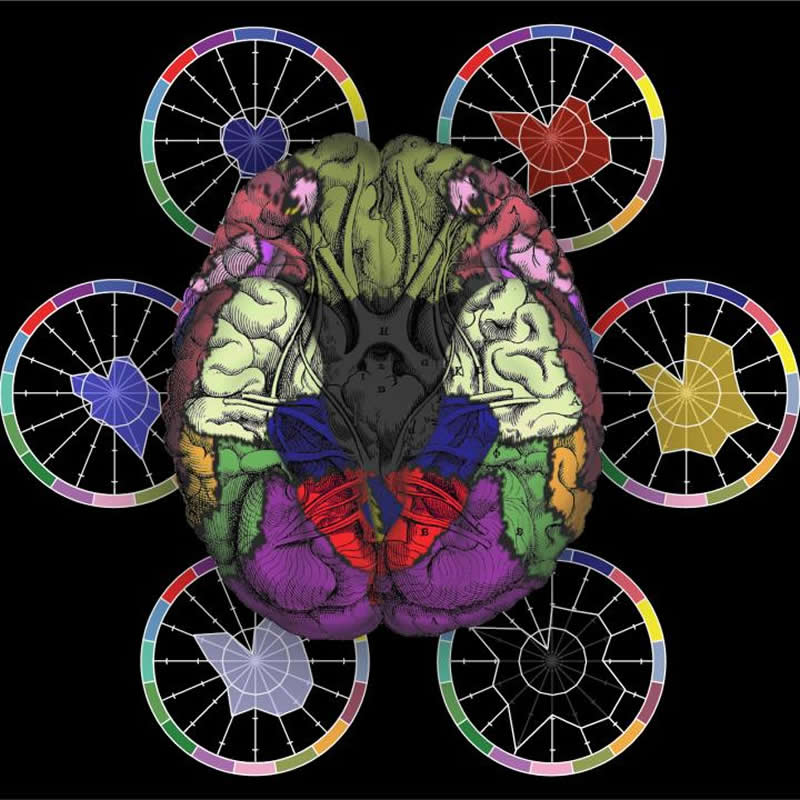Summary: Neuroimaging study finds significant changes in the brain associated with mental illnesses that could serve as a biomarker for diagnosis.
Source: McLean Hospital
Researchers from McLean Hospital and Yale University have published findings of their study of large-scale systems in the brain, findings that could improve understanding of the symptoms and causes of bipolar disorder, schizophrenia, depression, and other mental illnesses. Their paper, “Functional Connectomics of Affective and Psychotic Pathology,” published in the Proceedings of the National Academy of Sciences, details their investigation into brain network connectivity in patients with psychotic disorders.
According to lead researcher Justin T. Baker, MD, PhD, scientific director of the McLean Institute for Technology in Psychiatry, the study “took a birds-eye view to look into the ways large-scale systems in the brain interact with one another.” Baker and his colleagues used functional magnetic resonance imaging data from more than 1,000 individuals, including patients who had been diagnosed with conditions such as bipolar disorder, schizophrenia, and depression. Information was collected through rest scans, in which subjects were asked to simply lie in a scanner with their eyes open, allowing researchers to capture data about spontaneous fluctuations in the brain.
Baker explained that the work is based on connectomics, the concept of “measuring all connections in the brain at the same time.” He said that this type of “whole-system perspective” differs from most research into the biological foundations of psychiatric conditions. “For most studies, illnesses are studied in isolation, but evidence strongly suggests that distinct psychiatric diagnoses are not separated by clear neurobiological boundaries,” said Baker. “The approach we’ve taken is to look at the whole brain so you can see not only how individual systems–like the visual system and motor system–are functioning, but how higher order systems–like cognitive systems–are functioning in the brain to see if there are correlations.”
He said that the study is significant because “we don’t have any objective measures of psychiatric illnesses that allow us to verify a patient’s reports about their symptoms–there are no vital signs in psychiatry.” This work, however, allows for “brain ‘fingerprinting’ to try to address what changes in the brain are shared across illnesses and what aspects might be specific to different illnesses,” said Baker. “This work points to evidence at a high level that there are very pronounced changes in the brain that could start to serve as an objective biomarker.”

Moreover, Baker stated that “the study begins to give us a better way of seeing how schizophrenia, bipolar disorder, and depression are similar or have shared underlying causes.” He explained that prior research has indicated “that there is significant genetic risk for schizophrenia and bipolar disorder, and we also know that these conditions affect certain parts of the brain, but this study highlights that one system is affected or disrupted as a function of how severe the illness is, irrespective of whether it was psychosis or an affected illness like depression.”
Baker said that he and his colleagues plan to build on this research through studies into the functioning of large-scale brain systems related to OCD and trauma and longer-term investigations. “We want to see if there is a fingerprint for different conditions and then use that information and apply it to the individual,” he said. “We are conducting studies that follow individuals over time to look at the brain to see how symptoms are changing. We’re trying to go from the snapshot view of these biomarkers to something that is much more dynamic and captures changes and nuances.”
Source:
McLean Hospital
Media Contacts:
Laura Neves – McLean Hospital
Image Source:
The image is credited to Justin T. Baker, MD, PhD.
Original Research: Open access
“Functional connectomics of affective and psychotic pathology”. Justin T. Baker, Daniel G. Dillon, Lauren M. Patrick, Joshua L. Roffman, Roscoe O. Brady Jr., Diego A. Pizzagalli, Dost Öngür, and Avram J. Holmes.
PNAS. doi:10.1073/pnas.1820780116
Abstract
Functional connectomics of affective and psychotic pathology
Converging evidence indicates that groups of patients with nominally distinct psychiatric diagnoses are not separated by sharp or discontinuous neurobiological boundaries. In healthy populations, individual differences in behavior are reflected in variability across the collective set of functional brain connections (functional connectome). These data suggest that the spectra of transdiagnostic symptom profiles observed in psychiatric patients may map onto detectable patterns of network function. To examine the manner through which neurobiological variation might underlie clinical presentation, we obtained fMRI data from over 1,000 individuals, including 210 diagnosed with a primary psychotic disorder or affective psychosis (bipolar disorder with psychosis and schizophrenia or schizoaffective disorder), 192 presenting with a primary affective disorder without psychosis (unipolar depression, bipolar disorder without psychosis), and 608 demographically matched healthy comparison participants recruited through a large-scale study of brain imaging and genetics. Here, we examine variation in functional connectomes across psychiatric diagnoses, finding striking evidence for disease connectomic “fingerprints” that are commonly disrupted across distinct forms of pathology and appear to scale as a function of illness severity. The presence of affective and psychotic illnesses was associated with graded disruptions in frontoparietal network connectivity (encompassing aspects of dorsolateral prefrontal, dorsomedial prefrontal, lateral parietal, and posterior temporal cortices). Conversely, other properties of network connectivity, including default network integrity, were preferentially disrupted in patients with psychotic illness, but not patients without psychotic symptoms. This work allows us to establish key biological and clinical features of the functional connectomes of severe mental disease.






